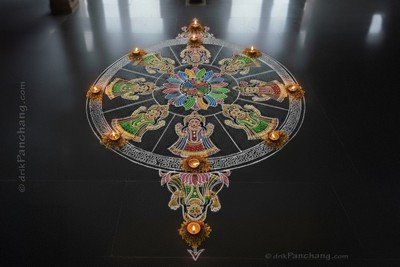






Notes: All timings are represented in 12-hour notation in local time of Lancaster, United States with DST adjustment (if applicable).
Hours which are past midnight are suffixed with next day date. In Panchang day starts and ends with sunrise.
According to the Hindu scriptures, Jyeshtha Shukla Dashami, i.e., Ganga Dussehra, Ashadha Shukla Dashami, i.e., Asha Dashami, Bhadrapada Shukla Dashami, i.e., Dashavatara Vrat and Ashwina Shukla Dashami, i.e., Vijaya Dashami are considered highly significant. These four auspicious Dashami Tithis are collectively known as Maha Dashami and each is regarded as supremely meritorious and sacred.
For Asha Dashami, Ashadha Shukla Maha Dashami is regarded as the principal and most significant for Asha Vrat. However, Asha Dashami Vrat can be observed on the Shukla Paksha Dashami Tithi of every month. The devotees can commence this fast on the Dashami Tithi of any Shukla Paksha. Various Hindu scriptures describe this observance in detail.
Asha Dashami is also one of the Manvadi Tithis, that are considered auspicious for taking holy dip in rivers, Havana, giving donations, performing Shradh and other religious activities. In ancient times, under the guidance of a Brahmin, Damayanti observed this Vrat and was reunited with her husband, King Nala. Lord Krishna instructed Dharmaraja Yudhishthira about the significance of this Vrat.
According to the Vrataraja, the Asha Dashami Vrat should be observed continuously for one year, followed by the Udyapana. However, the Bhavishya Purana states that the Vrat should be continued until one's heartfelt desire is fulfilled. The same text also mentions that whenever a person faces misfortune or calamity, they should perform the Asha Dashami Vrat to overcome their difficulties. This Vrat is known to grant the fulfillment of all desires.
In this observance, ten divine goddesses - Aindri, Agneyi, Yamya (Sanyamini), Nairrti, Varuni, Vayavya (Vayavi), Saumya (Uttara), Aishani (Ishani), Adhah and Brahmi, who preside over the ten directions, are worshipped. These deities are collectively known as the Asha Goddesses or Disha Goddesses; hence the Vrat is called Asha Dashami. Additionally, since the observance fulfills all aspirations (Asha), the day is also known As Asha Dashami.
By faithfully observing the Asha Dashami Vrat, a prince attains kingship, a farmer gains abundant crops, a merchant prospers in business, a childless person is blessed with offspring, a maiden receives an ideal husband and the people obtain Dharma, Artha and Kama. Furthermore, it ensures success for Brahmins in their Yajnas, grants health to the sick and reunites separated spouses. It also relieves children from teething troubles and removes all kinds of suffering.
According to the Vrataraja and Bhavishya Purana, on the Dashami Tithi of any Shukla Paksha, one should take a morning bath, perform daily rituals and worship the deities. At night, the devotee should worship the ten Asha Goddesses with flowers, sandalwood and Alakta or Alta.
One should devoutly worship the ten Asha Goddesses as prescribed in the Hindu scriptures - Aindri, Agneyi, Yamya (Sanyamini), Nairrti, Varuni, Vayavya (Vayavi), Saumya (Uttara), Aishani (Ishani), Adhah, and Brahmi.
In the courtyard, images of the ten directional deities should be formed using barley or flour known as Pishtataka, depicting each along with Her vehicle and weapon. These deities should be worshipped as the ten forms of the Asha Goddesses. Offer Diya to each Goddess and present Naivedya prepared with Ghee.
Afterwards, offer seasonal fruits and recite the following prayer for wish fulfillment -
आशाश्चाशाः सदा सन्तु सिद्धीयन्तां मे मनोरथाः।
भवतीनां प्रसादेन सदा कल्याणमस्तित्वति॥
Ashashchashah Sada Santu Siddhiyantam Me Manorathah।
Bhavatinam Prasadena Sada Kalyanamastitvati॥
Meaning - "O Asha Goddesses! May all my hopes and desires be fulfilled. By Your divine grace, may auspiciousness always prevail in my life."
After completing the worship, offer Dakshina to a Brahmin and accept the sacred Prasad. The Vrat should then be continued each month with devotion until one's desires are fulfilled.
According to the Bhavishya Purana (Uttaraparva, Chapter 64), on the day of Udyapana, one should worship the Asha Goddesses in the courtyard using images made of gold, silver or flour, as per one's capacity.
The devotee should then pray to the ten Goddesses for the fulfillment of desires. Along with them, prayers should also be offered to all Nakshatras, Graha, Taragana, Nakshatra Matrikas, Bhuta-Preta and Vinayaka for divine blessings.
After that, the Goddesses should then be worshipped with incense, Dipa, sandal paste, flowers, fruits, clothing and ceremonial offerings. Married women should engage in devotional singing and dancing during the Jagarana. The next morning, the devotee should offer the worshipped items, along with turmeric, rice, betel leaves and appropriate Dakshina, to a learned Brahmin. After seeking forgiveness for any known or unknown mistakes, the devotee should take his or her leave with reverence and distribute Prasad among family and friends.
Thus, the Udyapana of the Asha Dashami Vrat is completed as prescribed in the Bhavishya Purana. The glory of the Asha Dashami Vrat, as described in the scriptures, affirms that it should be observed for the fulfillment of rare and cherished desires. This Vrat is considered especially auspicious, meritorious and beneficial for women, bringing prosperity, peace and happiness to all who perform it with devotion.